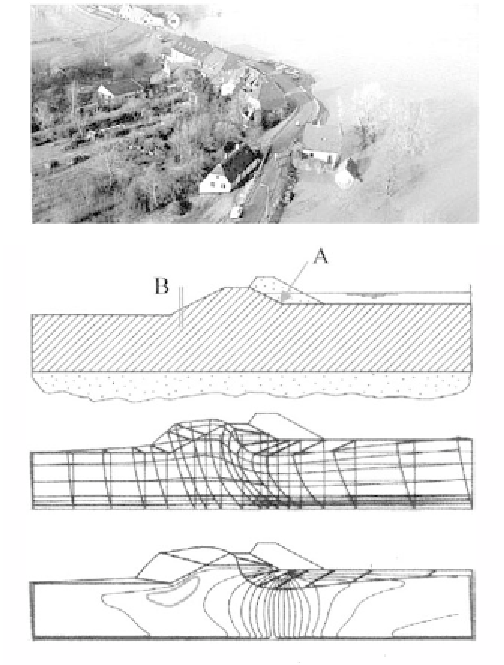Geoscience Reference
In-Depth Information
meter (position B) in the lee-side slope of the dike showed an immediate response,
which did not comply with the hydrodynamic response period of the clay layer
(months).
Figure 8.3a Boundary conditions, river dike
This immediate response was modelled by FEM considering two-dimensional
linear-elastic consolidation. Various boundary conditions at the sides and bottom
have been adopted: fixed, slip, pressure, impermeable, in 6 scenarios. The resulting
deformation of the toe of the dike (point A) shows a horizontal deformation for
different scenarios varying between 5 and 40 cm and vertical between 1 and 2.5
cm. The immediate pore pressure response did not vary as much (less than 10%).
Fig 8.3a shows one such scenario: deformations and excess pore-pressure contours.
The immediate response at point B is due to horizontal (total) loading by the river
water on the dike, which is reflected in the pore water. The vertical effective
stresses are slightly affected (by about 25% due to 2D-effects). So, slope stability
was not really at risk. When the river level dropped the excess pore pressures
disappeared rapidly. This example reveals that boundary conditions have distinctly
different effects on field variables. Particularly deformations are sensitive to
subjective choices for unknown boundary conditions.

Search WWH ::

Custom Search